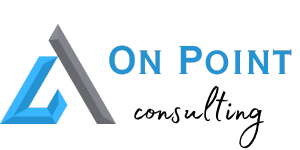Why Is Training A Good Investment?
Training: The Myths & The Magic
In the dynamic business realm, pervasive myths about workplace training create barriers to potential growth, stifling opportunities for both enterprises and their invaluable workforce. Let’s debunk the misconceptions and reimagine training as not just an expense, but a strategic investment with measurable returns. Effective training doesn’t just check boxes; it propels productivity, igniting efficiency, fostering innovation, and ensuring a swift Return-On-Investment (ROI).
Forget the notion that training is a disruptive force. Our tailored training programs seamlessly integrate into daily operations, igniting continuous improvement without causing upheaval. These programs aren’t just a feature; they are the bedrock upon which our company was founded.
Addressing the myth of post-training staff turnover, ongoing development isn’t a flight risk but a loyalty booster. A skilled workforce isn’t just a luxury; it’s a magnet for top talent. Employees seek companies committed to their growth, understanding the stark reality of a stagnant workplace—increased attrition, a flood of low-skilled applicants, and soaring operational costs.
Investing in workplace training isn’t overhead; it’s a proactive strategy shaping your company for sustained success. Our bespoke training programs redefine the narrative, unlocking a treasure trove of benefits that empower your workforce and propel organizational excellence. It doesn’t have to be complicated; let’s debunk myths and embark on a transformative journey together.
-
Business Needs Assessment
Understand the overarching organizational objectives, industry trends, and the capabilities of employees. Identify existing skill gaps and performance deficiencies through comprehensive assessments.
-
Define Clear Objectives
Define unambiguous and measurable learning goals that directly correlate with business outcomes. Clearly articulate the markers of success for both the organization and individual employees.
-
Create Targeted Content, or
Craft content that directly addresses identified needs and aligns with the predefined learning objectives. Ensure that the material remains pertinent, engaging, and applicable to daily work.
-
Customise Existing Content
Tailor existing training programs to suit the unique needs and characteristics of the organisation. Consider the diversity of roles, departments, and varying skill levels within the company.
-
Engaging Delivery Methods
Deploy a diverse array of delivery methods, including workshops, e-learning, mentorship, and on-the-job training. Accommodate different learning styles and preferences to enhance overall engagement.
-
Create Measurable Outcomes
Establish key performance indicators (KPIs) to quantifiably gauge the success of the training. Regularly assess and analyze outcomes to ensure consistent alignment with organizational goals.
-
Integration with Performance Management
Align training efforts with performance management processes to reinforce skill development. Connect training outcomes with employee evaluations and opportunities for career advancement.
-
Feedback Mechanisms
Institute regular mechanisms for feedback, encompassing both trainers and participants. Employ evaluations to refine and augment training content and delivery methods.
-
Continuous Learning Culture
Foster a pervasive culture of perpetual learning and skill enhancement. Encourage employees to actively seek ongoing opportunities for self-improvement.
What Would A Training Program Look Like?
Building a solid foundation. Effective business training strategies require careful planning and alignment with organizational goals. Identifying short, medium, and long-term objectives provides a clear roadmap for program development and resource allocation.
Hallmarks of success. While training topics may vary, successful strategies share common features. We leverage our expertise to guide companies through these critical steps:
- Needs analysis: Identifying specific performance gaps and skill deficiencies.
- Tailored content: Designing programs that directly address identified needs.
- Engaging delivery: Employing diverse and interactive training methods.
- Measurable outcomes: Establishing and tracking key performance indicators.
Leadership buy-in is crucial. Regardless of company size, clear leadership support is essential for resource allocation and prioritisation. We collaborate with executives to ensure training initiatives achieve maximum impact.
Adaptability and flexibility. We recognize that unexpected challenges and changing priorities may arise. Our strategies incorporate risk management techniques and built-in flexibility to ensure smooth adaptation.
Maximizing ROI. We strive to optimize return on investment through several methods:
- Train the Trainer: Empowering internal teams to deliver future training and sustain skills development.
- E-learning solutions: Integrating cost-effective online learning modules where appropriate.
- Coaching support: Providing ongoing guidance and reinforcement for acquired skills.
Rewarding performance and development. When training integrates with performance management and rewards, employees see a direct link between their improvement and value to the organization. This fosters engagement, innovation, and a sense of ownership that contributes to long-term success.
By building a comprehensive and adaptable training strategy aligned with organizational goals, we help businesses unlock the full potential of their workforce and achieve their desired outcomes.
